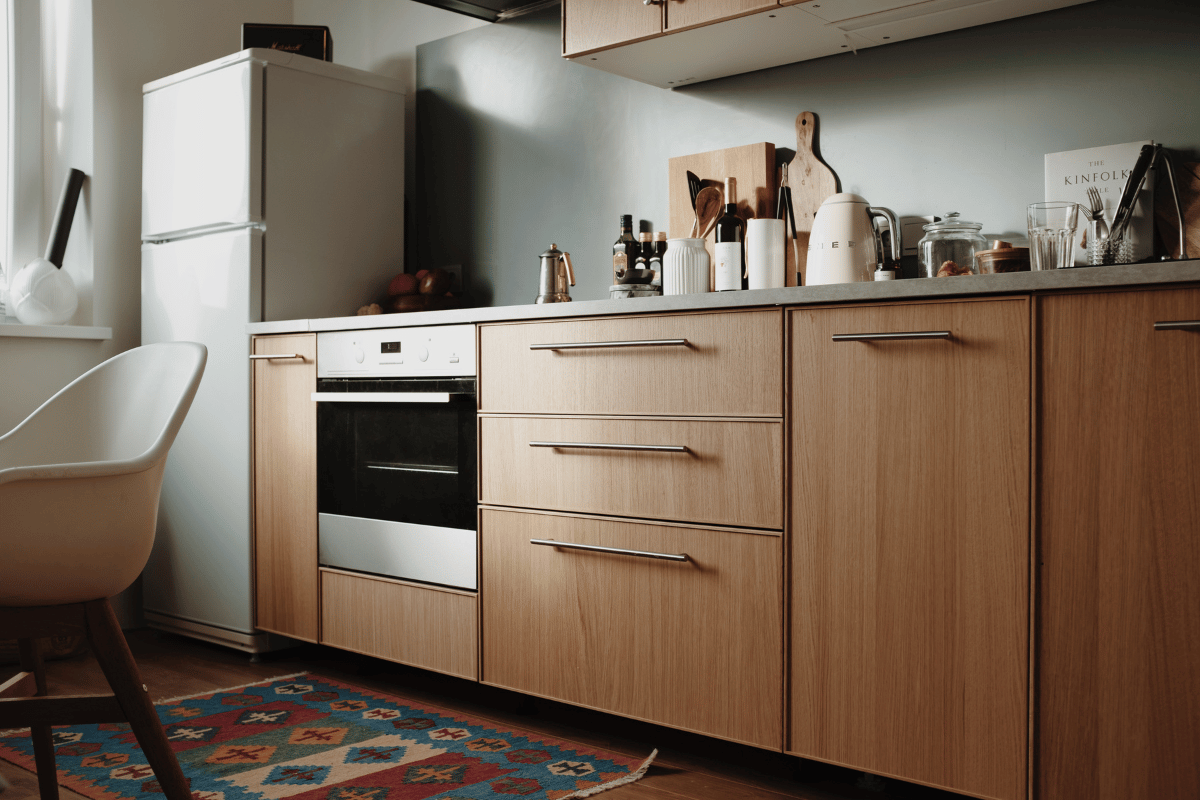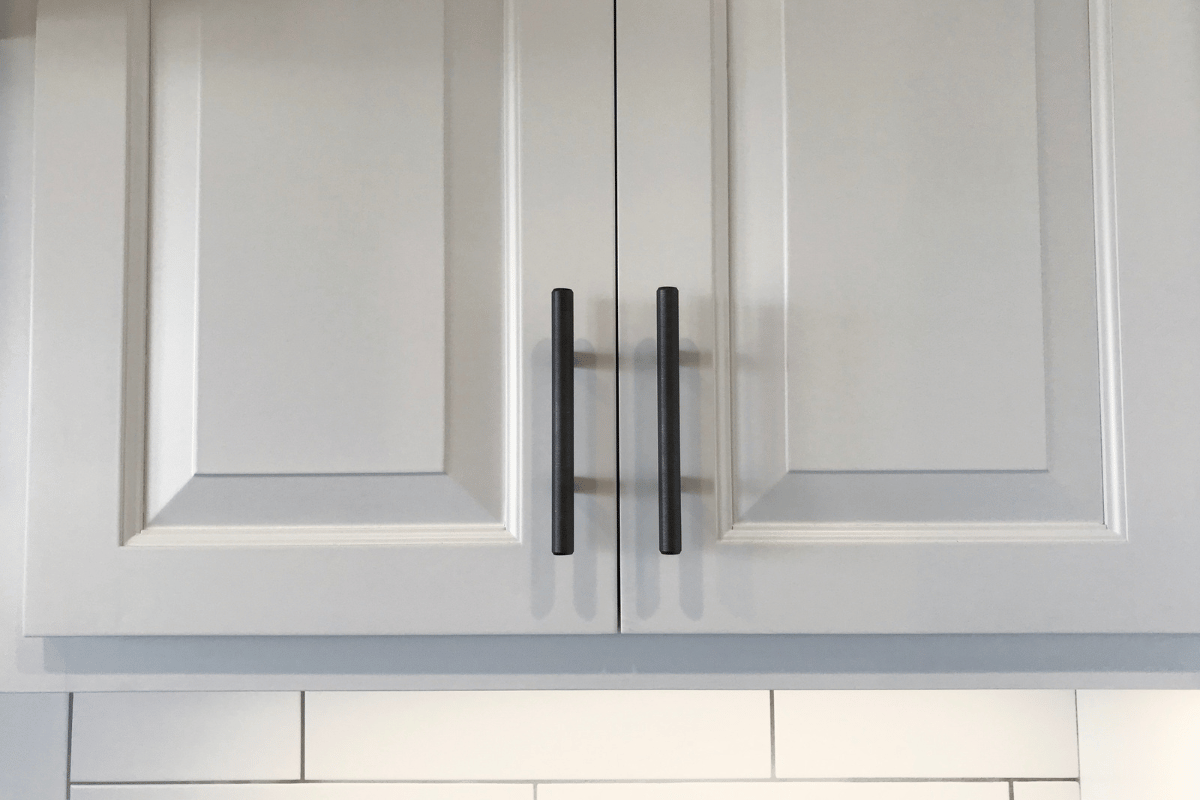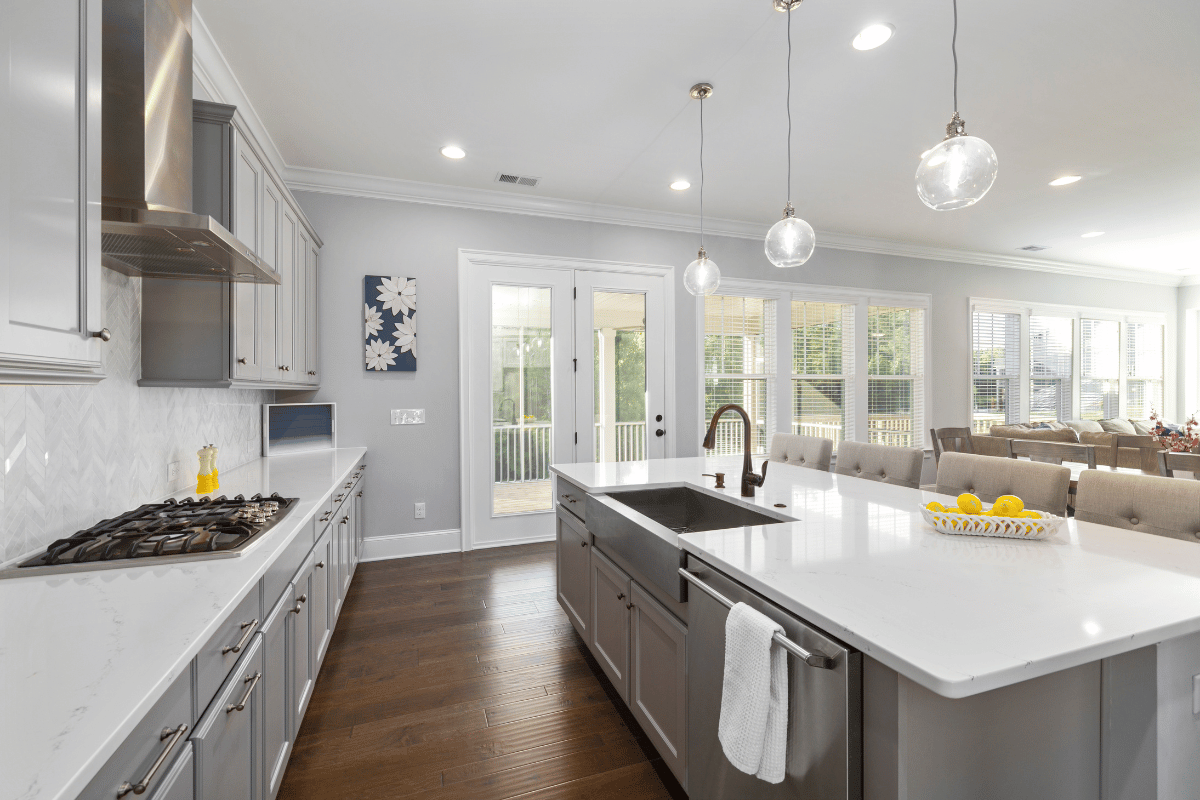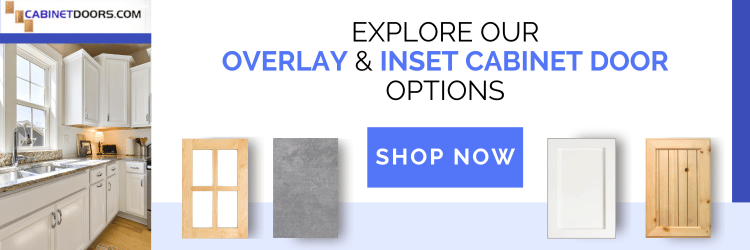Inset vs. Overlay Cabinets
Posted by Melissa Hollobaugh on May 14th 2025
When you purchase replacement cabinet doors, there are a lot of factors to consider, like what size you need, what style you like, and what kind of finish you want. As you weigh your options, compare inset vs. overlay cabinets. There are subtle but significant differences between the two that you need to consider before replacing the cabinet doors in your kitchen, bathroom, or office.
In this article, we’ll explore the main differences between inset and overlay cabinets so you can decide which cabinet door option is right for your next home renovation project. Here’s everything you need to know:
What are Inset Cabinet Doors?

As the name would imply, inset cabinet doors are set inside the cabinet's frame. That means when you shut the door, it sits flush with the frame. When the door is closed, the only thing sticking out is the cabinet door hardware, and the hinges can be on the outside or the inside. This design provides a sleek, unique, and luxurious look.
Depending on how many doors you want to replace, you will likely spend much more on inset doors. Even if your budget is limitless, you may struggle to find a professional who can hang the doors without harsh gaps or improper alignment. As a result, you may wait longer and spend more, but it may be worth it for the smooth appearance.
What are Overlay Cabinet Doors?

Overlay cabinets are much more common – you probably have them in your kitchen right now. Overlay cabinet doors lay over the face of the cabinet frame, essentially sitting on top of the cabinet frame.
Compared to inset doors, overlay doors are often preferable in terms of price and performance. Gapping is not a problem since the door transitions into the frame rather than inside it. These doors are also less likely to get misaligned since they don’t have to sit precisely inside the cabinet frame.
Full-Overlay Doors vs. Partial-Overlay Doors
Full-overlay doors cover up the entirety of the cabinet frame, which means that they almost meet edge to edge and cover the frame completely when all the doors are closed. The appearance resembles inset cabinet doors and creates the same clean, continuous look.
Partial-overlay doors, also known as half-overlay doors, only cover up part of the frame, so when all the doors are closed, you can see the individual doors sitting on top of the frame underneath. Many people prefer how partial-overlay doors give their cabinets depth and dynamism instead of a uniform appearance when deciding between full overlay vs. half overlay cabinet doors.
Visual Differences Between Inset and Overlay Styles
The key difference between inset and overlay cabinets is the visual impact. Inset cabinet doors sit flush against the cabinet frame. It provides a clean, streamlined appearance and only leaves a small gap around the door edge. The hinges are typically concealed. While this might be more visually appealing, it does mean you'll have less storage space in your cabinets.
Full overlay cabinet doors are designed to cover the frame. It provides a sleek, modern appearance and expertly hides the hinges. This option offers more storage but can be more costly. A partial overlay is a more cost-effective alternative. This option covers part of the cabinet frame and leaves behind a larger gap. This option typically doesn't look as streamlined or elegant as full overlay or inset cabinets, but can be more affordable for budget-friendly projects.
What to Consider Before You Invest in Inset or Overlay Cabinets

When exploring the differences between inset and overlay cabinets, it's best to consider your aesthetic preferences and functional needs. There are three key factors to consider:
Storage Space
If storage is your main priority, overlay cabinets will likely be a better option. Inset cabinets take up more storage space because they sit flush against the cabinet frame.
Construction and Installation
Overlay cabinet doors are easier to install than inset doors. Since the cabinet door is designed to fit on top of the face frame, it's a more beginner-friendly option for home renovation projects. Inset cabinet doors require precision to ensure that the cabinet door is flush inside the cabinet. Precision also protects the cabinet doors from warping or hinge misalignment.
Cost and Maintenance
Overlay cabinet doors tend to be more budget-friendly than inset cabinetry. The installation is easier, and you can use standard hardware for the project. If you love the look of the inset but have a smaller budget to work with, you can combine both options. Many homeowners install inset cabinets on the upper cabinets and overlay on the bottom. This is the best way to maximize usable storage while improving the overall functionality of your kitchen.
Explore Custom Inset and Overlay Cabinets
When comparing inset vs. overlay cabinets, it's best to consider your preferences and desired outcomes. While inset cabinet doors might have a more classy, refined appearance, the style requires additional maintenance and upkeep. Finding an option that aligns with your lifestyle and habits will ensure you invest in a quality cabinet door replacement that aligns with your storage needs and design preferences.
At CabinetDoors.com, all our overlay and inset cabinetry is custom-made and made to order. We have a variety of cabinet door styles and wood species to choose from for your next project. We also have cabinet hardware and matching drawer fronts available for purchase. Once you're ready to invest, send us the exact measurements you need, and we'll take care of the rest.
Explore our unfinished cabinet door collection today.
FAQs
Do inset cabinets require special maintenance?
Inset cabinet doors tend to be more susceptible to fluctuations in temperature and humidity. This means you may need to clean the cabinet doors more regularly to avoid damage caused by water. You'll also want to keep the humidity levels in your kitchen between 30-50%.
Can I mix inset and overlay cabinets in the same kitchen?
Yes, this popular approach offers functional and aesthetic benefits to your space. Many homeowners and renovators choose to install overlay cabinet doors on the bottom cabinets and inset for the upper cabinets. Since the bottom cabinets are more susceptible to general wear and tear, overlay cabinet doors are a more suitable fit, while inset cabinet doors offer a more unique, classy look to the upper cabinets.
Can you convert overlay cabinets to inset cabinets?
Yes, but you'd likely need professional support to get your desired results. Another alternative is to invest in replacement cabinet doors. This is a more affordable solution that can provide better results.
Can I change my existing inset cabinets to overlay doors?
Yes, you can change inset cabinets to overlay cabinets. However, you may need to invest in cabinet door replacements that fit the size of your cabinets and your desired overlay.
Can I change my existing overlay cabinets to inset doors?
Yes, you can change overlay cabinets to inset cabinets. However, you may need to trim the cabinet doors to ensure they sit flush against the frame. In some cases, it might be easier and more aesthetically pleasing to invest in replacement cabinet doors instead.
Can I use the same cabinet hardware for inset and overlay doors?
No, you'll likely need to invest in new hardware. Inset hinges are designed to sit inside the frame close to the front edge, while overlay hinges are designed to cover the cabinet frame. Inset hinges are more expensive than overlay hinges, which is something to consider if replacing your cabinet doors.



